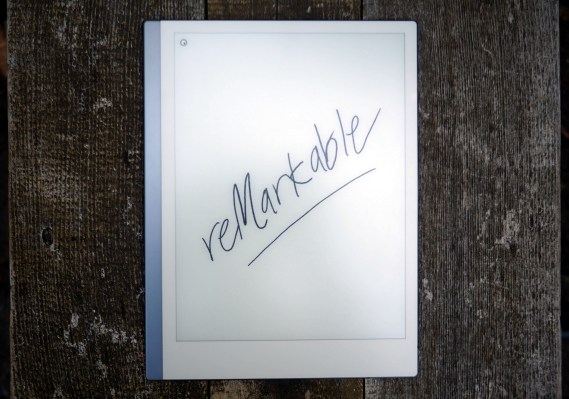In a rather surprising move, the makers of the reMarkable line of e-paper tablets have added a subscription service to their latest device that enables several of its more advanced features. All current users are provided a lifetime subscription, and new users get about a year for free, so nothing will change for most, but it’s still a considerable pivot for the startup.
The reMarkable Connect service comes in two tiers, a basic $5/month one that upgrades you to unlimited cloud storage for your documents, then an $8/month tier that adds access to Google Drive and Dropbox integration, handwriting conversion, screen sharing, send by mail and fast sync. With no subscription, devices will still sync but not for files left unopened for 50 days (so basically, you can’t use it as an archive). Anyone buying a reMarkable will get up to $150 off if they purchase a Connect subscription with it, which is pretty much break-even at a year or so.
On one hand, it’s an unexpected and somewhat dubious move: to charge for features that were essentially announced as simply part of the reMarkable suite of tools months back. And in fact those features were launched as ordinary free ones in recent weeks.
On the other, it’s somewhat understandable in terms of revenue and just about the best way to implement this: every current user gets it free, and everyone else gets a free year, plus there’s a free option that doesn’t hurt much if you use your device pretty casually.
I’ve asked the company for comment on the reasoning behind this decision and will update this post when I hear back.
When I reviewed the reMarkable 2 last year, I was impressed by the hardware, the responsiveness of the screen, and the simplicity of the interface. But as I noted then, despite its strengths the tablet really is still very much a niche device. Having spoken with the creators several times I’m convinced of their dedication to the vision of a sort of future paper that has an emphasis on focus and zero distraction. I get that, and I’m definitely into it — but the digital economy basically runs on distraction and overload, so it must be hard to carve a piece of that pie.
The company has shipped well over 100,000 units and raised capital as well, but dedicated hardware startups are few and far between. It’s not too surprising that the company would be looking for ways to bolster its income as hardware sales approached saturation.
Who knows, but it might be a play for a broader “focused productivity” suite, something I would definitely use. My criticisms of the device and service were that while what it did, it did well, but it didn’t do enough. A Chrome extension added article saving, but as a Pocket user I wish I could just connect that. Same for other content that would simply feel better to experience on the reMarkable. While I appreciate the minimalist philosophy, it felt arbitrarily limited, and now that there’s screen sharing and Drive/Dropbox integration, they can hardly argue against inclusion of other services.
By all means no email, no chat, no social functions, nothing like that — let me focus! — but let me focus on anything, not just stuff that fits through the bottleneck of reMarkable services. Everyone could use a little more focus in their lives, but it helps to reduce the friction to achieve that focus as well.
Oh, and a front light would be nice too, while I’m making feature requests. Look, my eyes aren’t what they used to be. Help me out.
